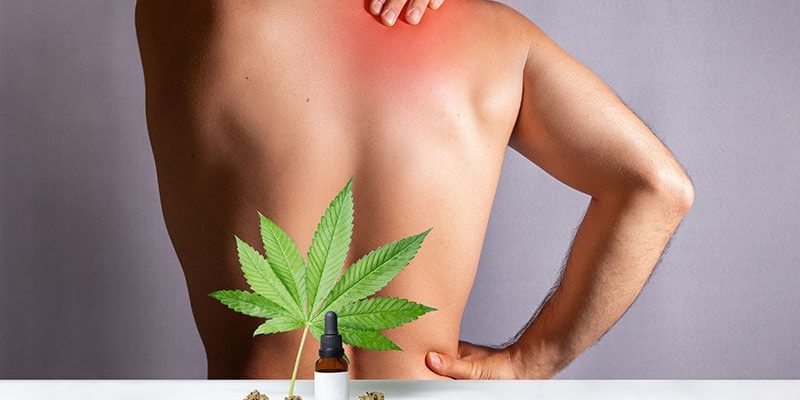Almost one third of patients with chronic pain report using medical cannabis to manage that pain, with more than half of them decreasing use of other pain medications, including opioids, new research shows.
“That patients report substituting cannabis for pain medicines so much really underscores the need for research on the benefits and risks of using cannabis for chronic pain,” lead author Mark C. Bicket, MD, PhD, assistant professor, Department of Anesthesiology, and director, Opioid Prescribing Engagement Network, University of Michigan, Ann Arbor, told Medscape Medical News.
However, he added, the question is whether they’re turning to cannabis and away from other pain treatments. “What’s not clear and one of the gaps that we wanted to address in the study was if medical cannabis use is changing the use of other treatments for chronic pain,” said Bicket.
The study was published online January 6 in JAMA Network Open.
Decreased Opioid Use
The survey included a representative sample of 1724 American adults aged 18 years or older with chronic noncancer pain living in areas with a medical cannabis program.
Respondents were asked about their use of three categories of pain treatments. This included medical cannabis; pharmacologic treatments including prescription opioids, nonopioid analgesics, and over-the-counter analgesics; and common nonpharmacologic treatments such as physical therapy, meditation, and cognitive behavioral therapy (CBT).
Just over 96% of respondents completed the full survey. About 57% of the sample was female and the mean age of the study sample was 52.3 years.
Among study participants, 31% (95% CI, 28.2% – 34.1%) reported having ever used cannabis to manage pain; 25.9% (95% CI, 23.2% – 28.8%) reported use in the past 12 months, and 23.2% (95% CI, 20.6% – 26%) reported use in the past 30 days.
“This translates into a large number of individuals who are using cannabis in an intended medical way” to treat chronic condition such as low back pain, migraine, and fibromyalgia, said Bicket.
More than half of survey respondents reported their medical cannabis use led to a decrease in prescription opioid use, prescription non-opioid use and use of over-the-counter medications.
Bicket noted “almost no one” said medical cannabis use led to higher use of these drugs.
As for nonpharmacologic treatments, 38.7% reported their use of cannabis led to decreased use of physical therapy, 19.1% to lower use of meditation, and 26% to less CBT. At the same time, 5.9%, 23.7% and 17.1%, respectively, reported it led to increased use of physical therapy, meditation, and CBT.
Medical cannabis is regulated at a state level. On a federal level, it’s considered a Schedule I substance, which means it’s deemed not to have a therapeutic use, although some groups are trying to change that categorization, said Bicket.
As a result, cannabis products “are quite variable” in terms of how they’re used (smoked, eaten etc.) and in their composition, including percentage of cannabidiol (CBD) and tetrahydrocannabinol (THC).
“We really don’t have a good sense of the relative risks and benefits that could come from cannabis as a treatment for chronic pain,” said Bicket. “As a physician, it’s difficult to have discussions with patients because I’m not able to understand the products they’re using based on this regulatory environment we have.”
He added clinicians “are operating in an area of uncertainty right now.”
What’s needed is research to determine how safe and effective medical cannabis is for chronic pain, he said.
Pain a Leading Indication
Commenting on the findings for Medscape Medical News, Jason W. Busse, PhD, professor, Department of Anaesthesia, and associate director, Centre for Medicinal Cannabis Research, McMaster University in Hamilton, Canada, said the study reinforces results of some prior research.
“It gives us current information certainly highlighting the high rate of use of medical cannabis among individuals with chronic pain once it becomes legally available.”
In addition, this high rate of use “means we desperately need information about the benefits and harms” of medical marijuana, he said.
Busse noted the survey didn’t provide information on the types of cannabis being used or the mode of administration. Oil drops and sprays cause less pulmonary harm than smoked versions, he said.
In addition, it’s not clear from the survey if participants are taking formulations with high levels of THC that are associated with greater risk of harm, he said.
He noted cannabis may interact with prescription drugs to make them less effective or, in some cases, to augment their adverse effects.
Busse pointed out some patients could be using fewer opioids because providers are under “enormous pressure” to reduce prescriptions of these drugs in the wake of spikes in opioid overdoses and deaths.
Chronic pain is “absolutely the leading indication” for medical marijuana, said Busse. Reimbursement data from the US suggest up to 65% of individuals get cannabis to treat a listed indication for chronic pain.
He said he hopes this new study will increase interest in funding new trials “so we can have better evidence to guide practice to help patients make decisions.”
The study received support from the National Institute on Drug Abuse (NIDA).
Bicket reported receiving grants from the National Institutes of Health, the Centers for Disease Control and Prevention, Michigan Department of Health and Human Services, Arnold Foundation, and the Patient-Centered Outcomes Research Institute, and personal fees from Axial Healthcare, outside the submitted work. Busse reports no relevant financial relationships.
JAMA Network Open. Published online January 6, 2023. Research Letter
For more Medscape Neurology news, join us on Facebook and Twitter
Source: Read Full Article
